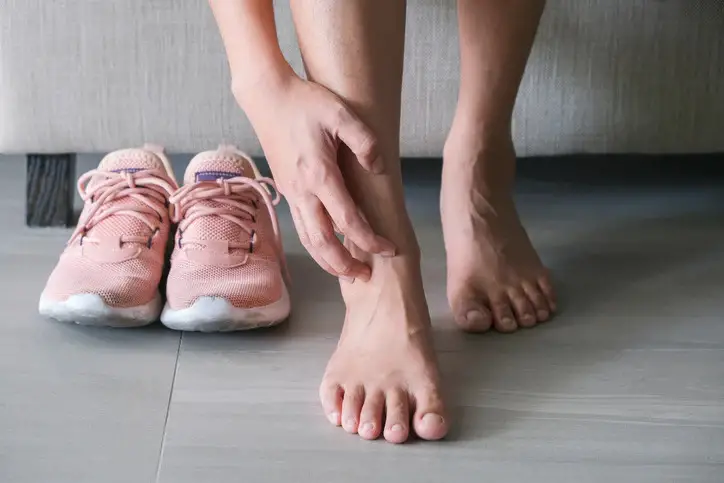How To Start Running Daily?
If you’re looking to incorporate running into your daily routine, you’ve come to the right place! Starting a daily running habit can have numerous benefits for your physical and mental well-being. In this guide, we’ll provide you with practical tips on how to begin your running journey. From setting realistic goals to finding the right gear and establishing a consistent schedule, we’ll cover all the essentials to help you start running daily and make it a sustainable and enjoyable part of your life. Let’s lace up those shoes and get started!
How To Start Running Daily?
To start running daily, follow these steps:
Set realistic goals
Determine why you want to run daily and set achievable goals. Start with small milestones and gradually increase your targets.
Get the right gear
Invest in a good pair of running shoes that provide proper support and comfort. Wear moisture-wicking clothing suitable for the weather conditions.
Create a schedule
Establish a consistent running schedule that works for you. Choose a time of day when you’re most energized and make it a non-negotiable part of your routine.
Start slow and build up
Begin with a combination of walking and running to build endurance. Gradually increase your running time and decrease walking intervals as you progress.
Listen to your body
Pay attention to any signs of fatigue or pain. Take rest days when needed to allow your body to recover and prevent injuries.
Stay motivated
Find ways to stay motivated, such as running with a friend, joining a running group, or tracking your progress with a running app.
What are the benefits of running every day?
Running every day can offer numerous benefits for both your physical and mental well-being. Here are some key advantages:

Improved cardiovascular health
Running daily helps strengthen your heart, improves blood circulation, and lowers the risk of cardiovascular diseases.
Weight management
Running is an effective way to burn calories and maintain a healthy weight. It can help you shed excess pounds and maintain a lean body composition.
Increased endurance and stamina
Regular running builds endurance and stamina, allowing you to perform better in other physical activities and daily tasks.
Stronger muscles and bones
Running engages multiple muscle groups, promoting muscle strength and bone density and reducing the risk of osteoporosis.
Enhanced mental well-being
Running releases endorphins, known as “feel-good” hormones, which can boost your mood, reduce stress, and alleviate symptoms of anxiety and depression.
Improved sleep quality
Regular physical activity like running can help regulate your sleep patterns, leading to better sleep quality and overall restfulness.
Increased cognitive function
Running has been linked to improved cognitive function, memory, and focus, enhancing overall brain health.
Boosted immune system
Regular exercise, including running, strengthens the immune system, reducing the risk of common illnesses and infections.
Related To: How To Start Running Outside?
Is it safe to run every day?

Running every day can be safe and beneficial for many individuals, but it’s important to approach it with caution and listen to your body. Here are some factors to consider:
Related to: How To Start Running For Weight Loss?
Do you need other exercises?
While running can provide numerous health benefits, incorporating other forms of exercise into your routine can be beneficial for overall fitness and well-being. Here are a few reasons why including other exercises is important:
How do I know what pace is right?
To determine the right pace for your runs, it’s important to consider your fitness level and goals. One effective method is to use the “talk test.” If you can comfortably hold a conversation while running, you’re likely at a moderate pace. If you’re struggling to speak, you may be running too fast. Another approach is to use a heart rate monitor and aim for a target heart rate zone, typically around 50–70% of your maximum heart rate. Experiment with different paces to find what feels sustainable and enjoyable for you.
How Long to Run When You Start
When you start running, it’s recommended to begin with shorter durations and gradually increase your running time. As a beginner, aim for around 20–30 minutes of running per session, three to four times a week. Listen to your body and gradually increase your running time or distance by 10% each week.
This gradual progression allows your body to adapt and reduces the risk of injury. Remember, consistency is key, so focus on building a sustainable running routine that works for you.
Sunscreen and Other Health and Safety Tips
When it comes to running, protecting your health and safety is crucial. Here are some tips to keep in mind:
| Days | WEEK 1 | WEEK 2 | WEEK 3 | WEEK 4 |
|---|---|---|---|---|
| Monday | Run 10 minutes, walk 3 minutes | Run 13 minutes, walk 2 minutes, and run 5 minutes | Run 20 minutes, walk 1 minute, and run 5 minutes | Run 28 minutes |
| Tuesday | Rest | Rest | Rest | Rest |
| Wednesday | Run 10 minutes, walk 2 minutes, and run 5 minutes | Run 15 minutes, walk 1 minute, run 5 minutes | Run 25 minutes | Run 30 minutes |
| Thrusday | Rest | Rest | Rest | Rest |
| Friday | Run 12 minutes, walk 1 minute, run 3 minutes | Run 17 minutes, walk 1 minute, run 7 minutes | Run 25 minutes | Run 20 minutes |
| Saturday | Rest | Rest | Rest | Rest |
| Sunday | Cross-train | Cross-train | Cross-train | Run 30 minutes |
Conclusion
Starting a daily running routine can be a transformative experience for both your body and mind. By following the tips outlined in this guide, you can gradually build up your endurance, improve your cardiovascular health, and boost your overall fitness level. Remember to listen to your body, stay consistent, and celebrate your progress along the way. So, lace up those running shoes, hit the pavement, and embrace the incredible benefits that daily running can bring to your life. Happy running!

















